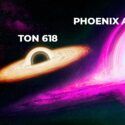Billions of years from now, the Sun will become a red giant. And then, it will slowly die. That’s right. It’s the end of the Solar System, and this is your survival guide. What will happen when Earth becomes too toasty to sustain life? Where else in the Solar System could human civilization live? And what would the Sun be like in its final days?
For around 4.5 billion years, our Sun has been the bright center of our Solar System. It’s fueled by the nuclear fusion in its core. And it burns through 661 million tons of hydrogen every second. During its stellar lifespan, the Sun has burned through about half of its fuel source. That means our star has another 5 billion years left in it.
As the Sun uses up its hydrogen through nuclear fusion, it becomes more saturated with helium. And that makes it spit out even more energy. Every billion years that it burns hydrogen, our Sun gets about 10% brighter. Eventually, all that energy will push out the Sun’s outer layers and our star will swell in size. Then, we’ll have a red giant at the center of our Solar System. Game over, right?
Let’s fast-forward to around 1.5 billion years from now. Sorry to say but things won’t be looking too good for life on Earth. The Sun’s increased brightness will set off intense global warming. Our planet will become so hot that our oceans would start to boil. The increasing heat and radiation of our Sun will shift the habitable zone of our Solar System. And now, the area where liquid water could exist will move out toward Mars.
Yeah, Mars will now become habitable. And it could be humanity’s first destination for settlement. But to create a breathable atmosphere, we’d still have to terraform the red planet. At this point, Mars could remain habitable for as long as 5 billion years. That should give us plenty of time to make our next move. In about 7.5 billion years, our Solar System will have a giant problem.
A red giant problem, of course. Our star will run out of its hydrogen fuel and start burning helium instead. The Sun will expand, completely vaporizing Mercury. The atmosphere of Venus will burn up. Eventually, the expanding Sun will swallow Venus whole. And our Earth? Well, it will get reduced to a dense, hot iron core. Our new home on Mars won’t be habitable anymore either.
Humanity’s best hope would be to hop over to Europa, Jupiter’s fourth-largest moon. Its thick layer of ice will melt from the Sun’s increased heat. Europa could become a wonderful water world. Jupiter’s moon could be our home for a few hundred million years. That’s when the Sun will reach its maximum size as a red giant. It will shine about 3,000 times brighter than it does today, and its surface could extend well beyond Earth’s orbit.
Eight billion years from now, the Sun could make life intolerable as far as Pluto. Our best hope at that point would be to find a home on a distant dwarf planet in the Kuiper Belt. The temperatures there could be similar to what we were used to on Earth. Life on Earth would be a thing of the very, very distant past for this generation of humans.
Two billion years after that, our Sun’s fuel reserves will completely dry up. The Sun will become unstable and will start to pulse. This will cause it to shrug off its outermost layers. The Sun will change from a red giant to a white dwarf. This means it will shrink until it becomes the size of Earth today. It will blast off massive amounts of X-ray radiation but less heat.
The habitable zone will dramatically shift once again. It could go from the Kuiper Belt to about where Mercury used to be. For human civilization to continue, we’d have to move onto another star’s habitable exoplanet. Our white dwarf star would radiate for quadrillions of years, so moving back to its new habitable zone wouldn’t be a good idea.
When our former Sun used up the last of its energy, it will no longer be able to shine or radiate heat. But it will still have mass and gravitational pull. It may become a black dwarf. Scientists have yet to find any such stars as they would have to be much older than our 14 billion-year-old Universe. Alright, so you’ve made it to the end of the Solar System. I’m sure it wasn’t easy to say goodbye to the Sun. But hey, at least it’s not exploding tomorrow.
Sources
- “The Sun Will Eventually Engulf Earth–Maybe”. David Appell. 2008. scientificamerican.com.
- “The sun will destroy Earth a lot sooner than you might think”. 2018. independent.co.uk.
- “Red Giant Stars: Facts, Definition & The Future Of The Sun”. Nola Taylor Tillman. 2022. space.com.
- “Will Earth Survive When The Sun Becomes A Red Giant?”. Matt Williams. 2016. phys.org.
- “Here’s What Happens To The Solar System When The Sun Dies”. Eric Betz. 2020. discovermagazine.com.


























